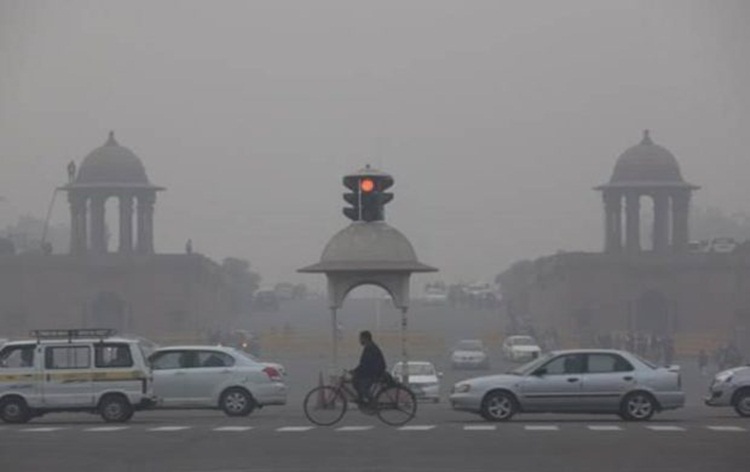India’s capital, New Delhi re-opened schools and some building sites on Monday, amid signs of receding air pollution that authorities had deemed hazardous, although a toxic foam besmirched stretches of the Yamuna river flowing through national capital.
The world’s most polluted capital resumed its annual battle on pollution this month, despite government pledges to improve. Monday’s air quality index (AQI) of 336 was down from Thursday’s level of 509, but still “hazardous”, Swiss group IQAir said.
The SAFAR (System of Air Quality and Weather Forecasting and Research) monitoring agency recorded the air quality as ‘poor’ on Sunday with PM-10 levels at 209 and PM 2.5 at 112.
The air quality in Delhi as per SAFAR was 283 while anything above 60 is considered unhealthy.
Children wore masks on the way to school, after a closure of nearly two weeks to protect them from pollution, while Hindu devotees celebrating a festival trudged through the smoggy morning for a dip in the river, undeterred by the white foam, which authorities have described as toxic.
The foam arises from settled sludge and untreated waste, said a former adviser to the Delhi government, adding that the city’s water board was spraying a food-grade chemical to control it.
“The foam is not lethal by nature,” said the former official, Ankit Srivastava, an environmental engineer. “You will not die by consuming it, but you would fall ill.”
On Sunday, Delhi’s Environment Minister Gopal Rai told reporters that construction work on public infrastructure projects could resume, although with curbs on activities that blow dust through the air.
Those remarks followed Saturday’s revocation of emergency measures ordered on Nov. 5 to keep air quality from worsening, including a ban on all building activity, but which were eased after index levels improved.
Delhi’s air pollution gets worse in winter, when wind speeds drop and cooling air traps pollutants spewed by vehicles, industry and farmers burning agricultural waste in surrounding states to prepare for new planting.
Traffic emissions were a big contributor on Monday to fine particles of size 2.5 micrometers (PM2.5) suspended in the air, a real-time study by experts collaborating with the Delhi government showed.
Vehicles contributed 51% of such particles, considered especially dangerous to humans, along a key thoroughfare, up from levels of 27% and 32% over the last two days, the study added.
(Reuters)














